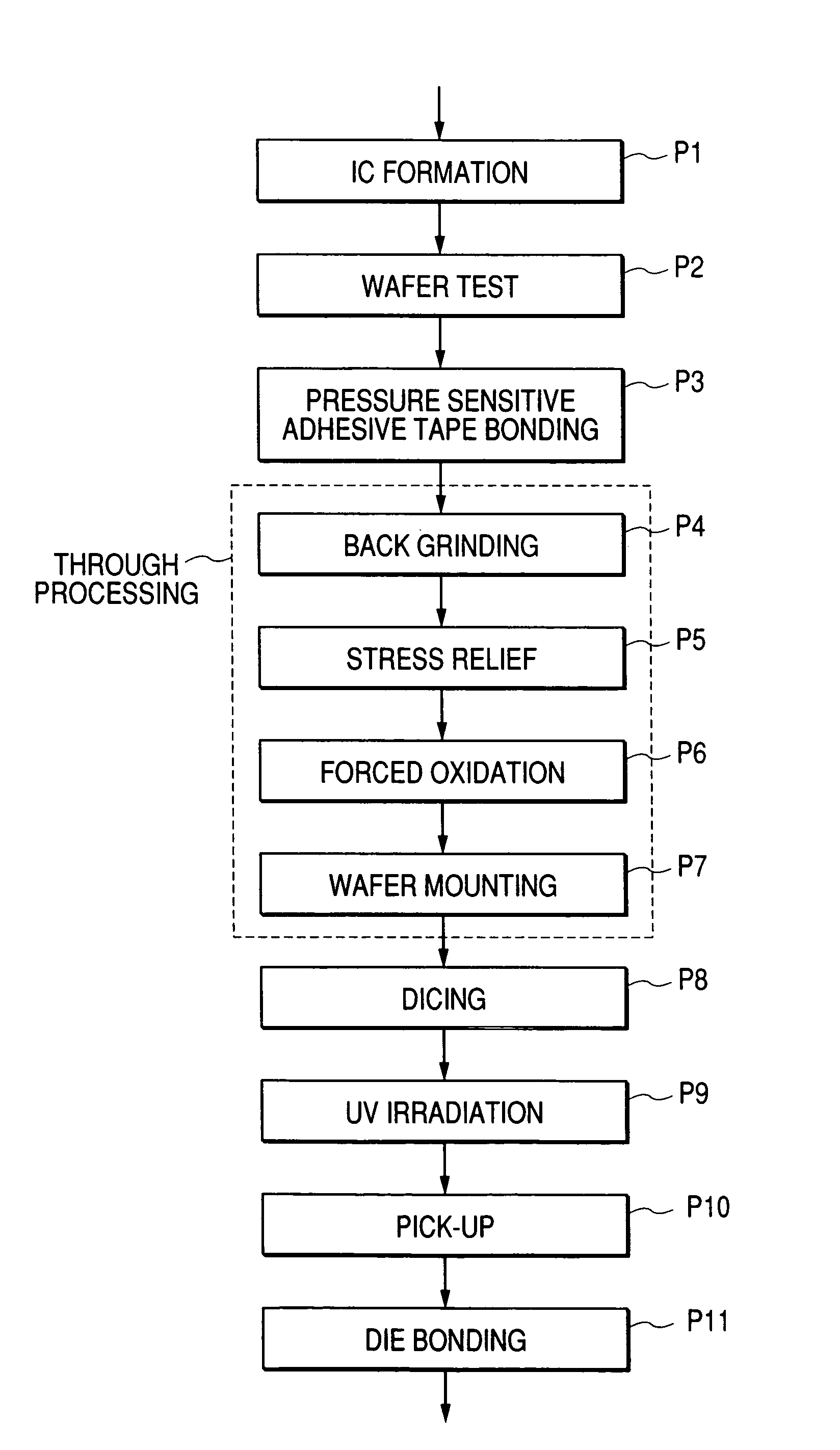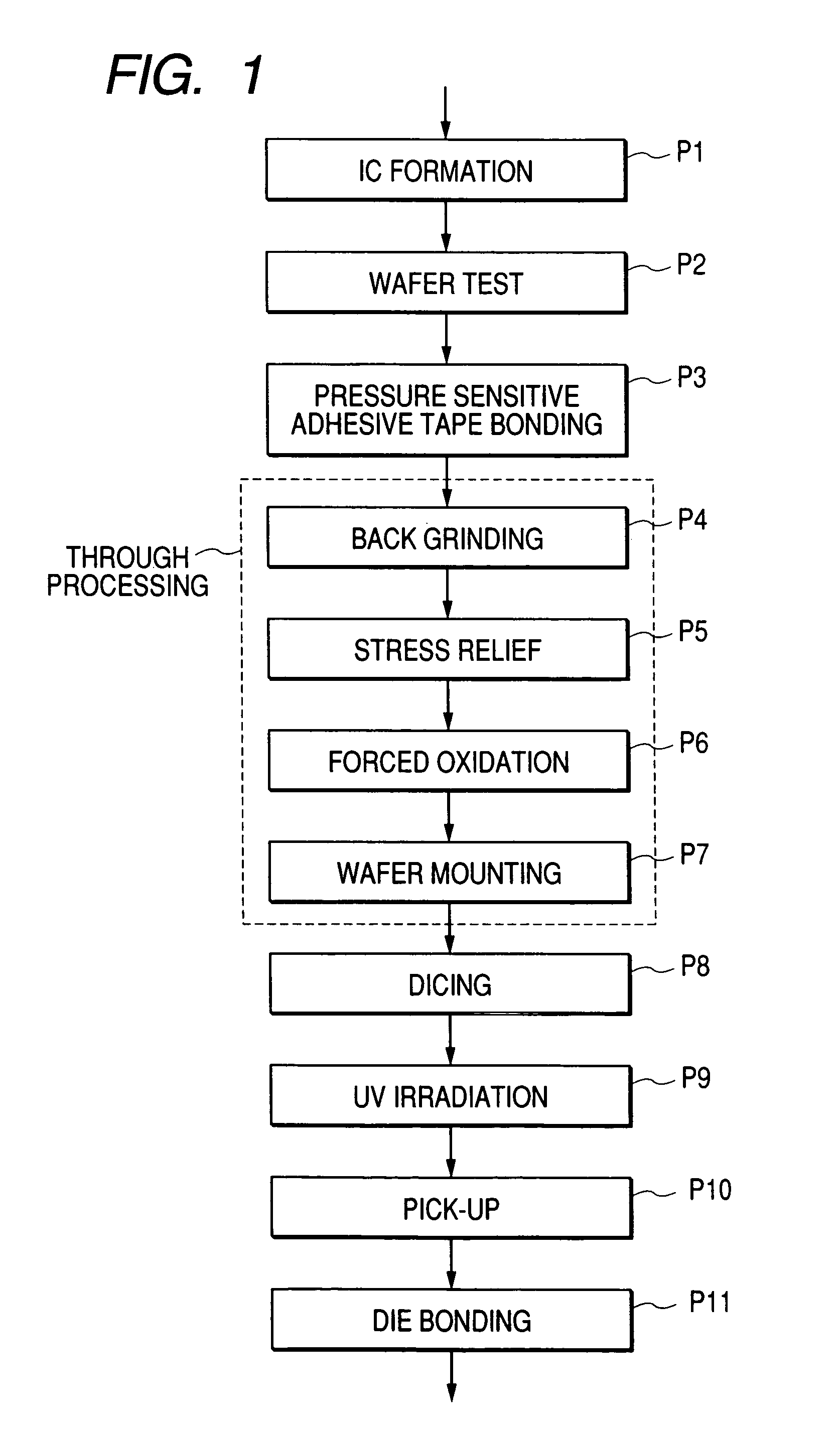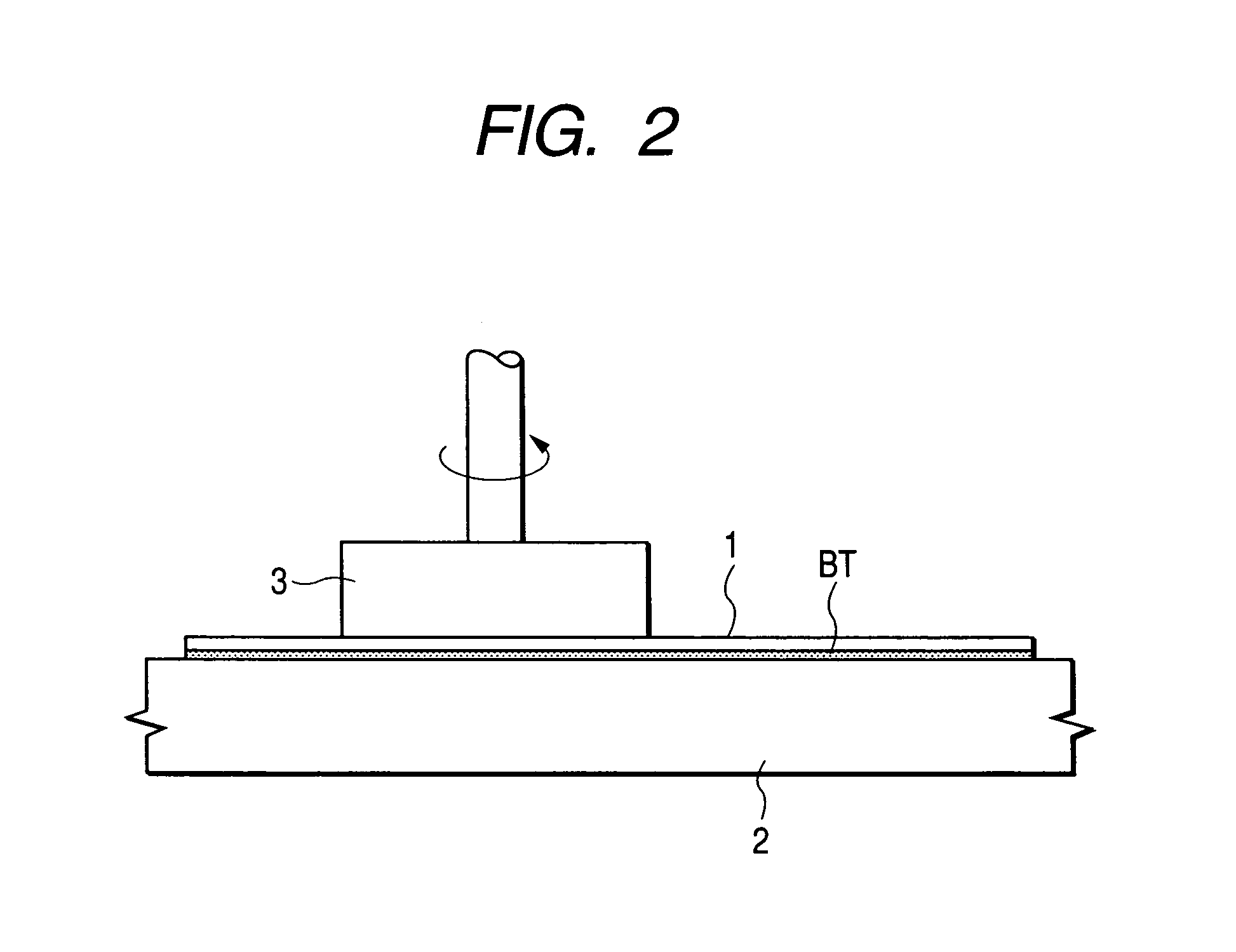Fabrication method of semiconductor integrated circuit device
a technology of integrated circuit devices and fabrication methods, which is applied in the direction of semiconductor devices, electrical appliances, basic electric elements, etc., can solve the problems of cracking of semiconductor wafers, and achieve the effect of reducing the thickness of the wafer
- Summary
- Abstract
- Description
- Claims
- Application Information
AI Technical Summary
Benefits of technology
Problems solved by technology
Method used
Image
Examples
embodiment 1
[0058]A method of fabrication of a semiconductor integrated circuit device according to Embodiment 1 will be described in the order of the steps thereof with reference to FIG. 1 to FIG. 13. FIG. 1 is a process flow chart showing a method of fabrication of the semiconductor integrated circuit device, FIG. 2 to FIG. 4 and FIG. 8(a), and FIG. 9 to FIG. 12 are side elevational views showing a main portion of the semiconductor integrated circuit device, FIG. 8(b) is an upper plan view showing a main portion of the semiconductor integrated circuit device, FIG. 5 is a diagram showing an ozonized water generation device, FIG. 6 is a diagram showing a cleaning portion of back grinding, FIG. 7 is a diagram showing the step of forming carbon dioxide-incorporated water, and FIG. 13 is a diagram showing a through processing apparatus from back grinding to wafer mounting. In the following description, only each of the steps, from back grinding after forming a circuit pattern on a semiconductor wa...
embodiment 2
[0091]In response to a demand for reducing the thickness of the chip, the semiconductor wafer is ground in back grinding to a thickness, for example, of less than 100 μm. The back surface of the ground semiconductor wafer comprises an amorphous layer / polycrystal layer / micro-crack layer / atom level strain layer (stress transfer layer) / complete crystal layer, in which the amorphous layer / polycrystal layer / micro-crack layer are crystal defective layers. The thickness of the crystal defective layer is, for example, about 1 to 2 μm.
[0092]In the case where a crystal defective layer is present on the back surface of the semiconductor wafer, this results in a problem in that there is a lowering of the flexion strength (stress value when the chip is destroyed upon application of a simple bending stress to the chip) of the chip divided from the semiconductor wafer into individual pieces. Lowering of the flexion strength appears remarkably in a chip with a thickness of less than 100 μm. Thus, s...
PUM
 Login to View More
Login to View More Abstract
Description
Claims
Application Information
 Login to View More
Login to View More - R&D
- Intellectual Property
- Life Sciences
- Materials
- Tech Scout
- Unparalleled Data Quality
- Higher Quality Content
- 60% Fewer Hallucinations
Browse by: Latest US Patents, China's latest patents, Technical Efficacy Thesaurus, Application Domain, Technology Topic, Popular Technical Reports.
© 2025 PatSnap. All rights reserved.Legal|Privacy policy|Modern Slavery Act Transparency Statement|Sitemap|About US| Contact US: help@patsnap.com



